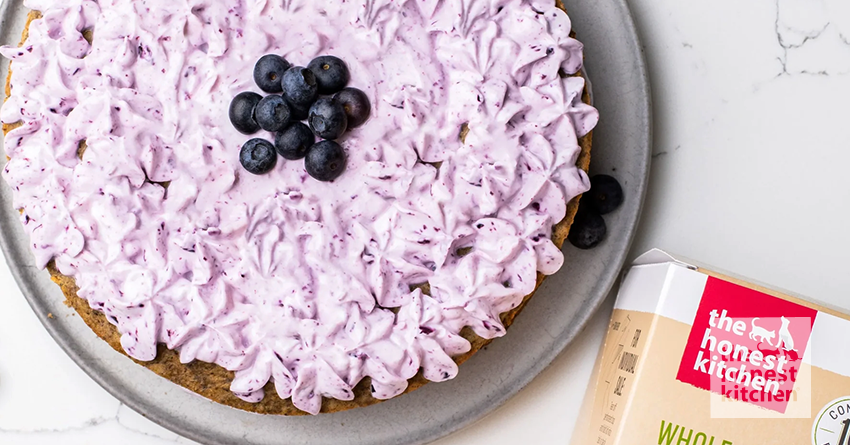
Blueberry Birthday Cake
Surprise your pup with a delicious and healthy treat - a homemade Blueberry Birthday Cake for Dogs! Pamper your pup with this nutritious and flavorful recipe that is sure to make their tails wag.
Read more
Surprise your pup with a delicious and healthy treat - a homemade Blueberry Birthday Cake for Dogs! Pamper your pup with this nutritious and flavorful recipe that is sure to make their tails wag.
Read more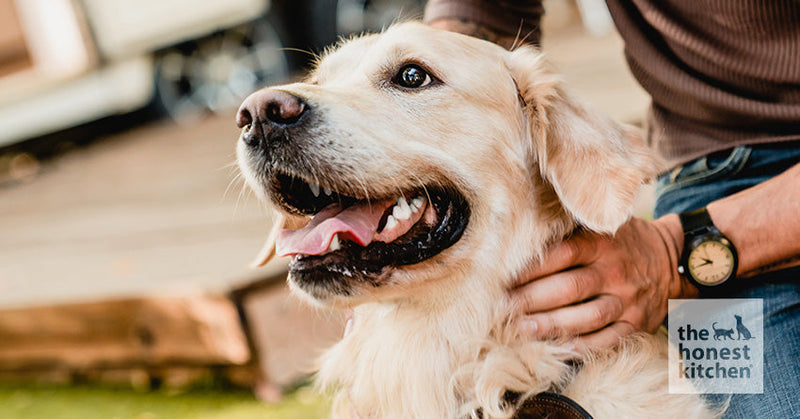
Discover the best dog food options for your Labrador Retriever. From dry to wet food, find out what is most nutritious and suitable for your furry friend.
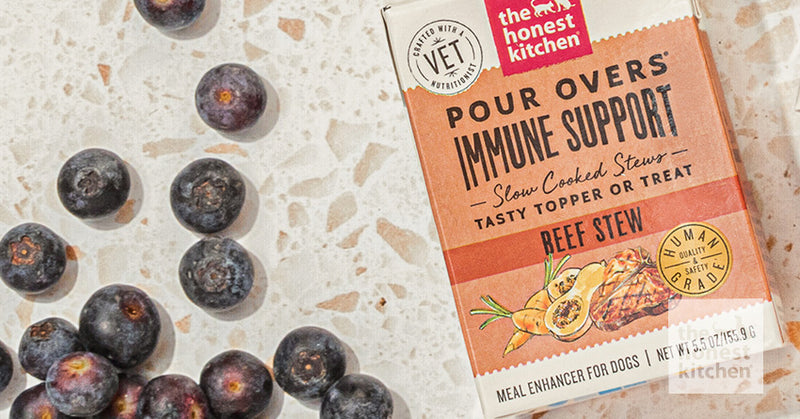
Most of us think about our immune system on a pretty regular basis. We want to know what to do to protect our bodies against germs, bacteria, and viruses. This might look like vaccines, elderberry syrup, or both. But have you ever considered immunity boosters for your dog? Just like humans, dogs have immune systems. And it’s equally important to ensure you’re supporting your dog’s immune health so they can stay as healthy as possible. Here are the tips you need to know about what affects canine immune systems and how you can help your dog’s immune system get stronger. The Most Important Factors for a Dog’s Immune Health The three most important elements that play into your dog’s immune health are diet, exercise, and vaccines (and other medical prevention). When taken together, these three factors will keep your dog’s immune system as strong as possible. Diet Your dog’s diet plays a significant role in their immune system health. Studies indicate that a whole-food diet in dogs could help regulate their immune system (similar to how this diet works in humans). Your dog should have a complete, well-balanced, and easily digestible diet. Some dietary considerations you may wish to make include incorporating: Antioxidants Vitamin E Zinc Glutathione We’ll discuss these vitamins and immune boosters in more detail later in this article. Your dog’s gut health is also important to consider. A healthy microbiome (which includes good and bad bacteria, viruses, and other organisms in the digestive tract) improves overall immunity. When your dog’s microbiome is stable, they get the best of both worlds — preventing excessive inflammation but still responding immediately to infections. Consult with your vet for guidance on the best diet to support your dog’s immune system. If they recommend it, probiotics for dogs can help. Probiotics help nourish the “good bacteria” that live in your dog’s digestive system. They improve symptoms such as diarrhea or constipation. You can purchase probiotic powders, capsules, or chews for dogs. Exercise The second factor that affects your dog’s immune health is physical activity. Exercise boosts antioxidants more than any supplement. With regular exercise, your dog will maintain a healthy body weight, feel less stressed, and enjoy improved blood pressure, circulation, and joint health. These all help support the immune system. A healthy body weight reduces the inflammatory stress on your dog’s immune system. Dogs that are less stressed will experience a boosted immune system, too. Vaccines and Medical Prevention Vaccines induce stronger immunity so your dog will be protected from infection or disease. Vaccines are generally safe and recommended, or even required, for dogs, as they boost your dog’s immunity to common deadly diseases like: Distemper: Canine distemper virus is highly contagious and often fatal. Parvovirus: Parvo is another example of a contagious, dangerous virus that can be prevented by a vaccination. Leptospirosis: A bacterial infection that spreads through the bloodstream, leptospirosis can vary in severity but can spread to humans, too. Rabies: While the rabies vaccine is not considered a core vaccine, rabies is fatal — so keeping your dog updated on their rabies vaccine is important. Conditions and Signs That Your Dog’s Immune System May Be Compromised If your dog has received medication or a vaccine that they are sensitive to, this can be a risk factor that might harm their immune system. This isn’t especially common — not common enough to stop administering canine vaccines. From time to time, however, it does happen. Here are some additional conditions that can compromise a dog’s immune system. IMHA IMHA stands for Immune-Mediated Hemolytic Anemia. This autoimmune disease causes anemia and sometimes causes blood clots. Cocker spaniels and poodles are particularly susceptible to this condition. IMPA Immune-Mediated Polyarthritis (IMPA) is an active inflammatory process in a dog’s joints. The biggest factor that comes into play with IMPA is whether your dog has had an infection near its joints. This condition is also common among dogs who live in locations with a lot of tick-borne illnesses. Consequently, it attacks the joints, leading to an impaired immune response. Recurring Infections If your dog gets infections repeatedly, this could be a sign of a weakened immune system that cannot fight off infection. You might see frequent skin infections, ear infections, eye infections, or diseases like Lyme or kennel cough. Urinary Tract Infections Urinary tract infections are another infection that may occur commonly in dogs with weak immune systems. Most UTIs in dogs are bacterial. Common symptoms of UTIs in dogs include: Bloody and/or cloudy urine Straining or whimpering during urination Accidents in the house Wanting to be let outside more frequently Dribbling urine Licking around urinary opening Fever A veterinarian is the only one who can diagnose a UTI with certainty, and it’s usually treated with antibiotics. Skin Infections If your dog’s immune system is lacking, they may get recurrent skin infections. Symptoms of skin infections in dogs include itching, rashes, patchy hair loss, and scabs or crusting on the skin. Cancer Cancer forms when an abnormal cell isn’t recognized as abnormal and is allowed to replicate. Every day, we create “wrong copies” of genes that must be corrected. For people and dogs who develop cancer, their bodies cannot ID and correct those genes. Lupus Lupus, an autoimmune disease, happens when a dog’s immune system starts to attack its own tissues. Treatment requires suppressing this immune response, which can have additional side effects. An Immunity Booster for Improving Your Dog’s Health Diet is one of the most important factors that can make or break a dog’s immune system. In addition to your dog’s regular food, you may consider adding dog food toppers with ingredients that help provide immune system support. The Honest Kitchen’s line of human grade functional dog food toppers are packed with natural, high-quality ingredients that help support immune health — and taste great! Functional Pour Overs: Immune Support — Beef Stew The Immune Support Beef Stew is a pourable stew with beef and bone broth. The key ingredients here are vitamin E and antioxidants, which are both know to help support a healthy immune system in dogs. iAt-Home Remedies To Boost Your Pup’s Immune System Store-bought dog food is a convenient option for many pet owners. However, there are plenty of immune-boosting foods that you may already have in your kitchen! Here are just a few dog-safe options that you can work into their diet. Antioxidants Antioxidants — compounds that protect your cells — can significantly improve immune health. Dog-safe foods or ingredients that are good sources of antioxidants include berries, carrots, sweet potatoes, pumpkin, broccoli, spinach, and kale. Vitamin E Vitamin E is an antioxidant that strengthens the immune system against viruses and bacteria. Dogs can get extra vitamin E in fish, eggs, or spinach. Zinc Zinc also helps the immune system fight off invaders. Red meat (beef, pork, lamb), fish, eggs, nuts, and seeds provide additional zinc for dogs. Medicinal Mushrooms Medicinal mushrooms are another powerful immune system booster that are a safe dietary supplement for dogs, as an anti-inflammatory or an immune-boosting supplement. Trametes versicolor (turkey tail) is an example of a medicinal mushroom for dogs. Because turkey tail includes antioxidants like phenols (which make the immune system more effective against foreign agents) and flavonoids (which have anti-inflammatory effects), it can boost the immune system and may even slow cancer growth. Maitake mushrooms help the body produce more lymphokines (protein mediators) and interleukins (secreted proteins), which improves your immune response. Berries Berries contain antioxidants and other vitamins that support the immune system. Some of the best immune-boosting berries that are safe for dogs to eat are blueberries, strawberries, and blackberries. Pumpkin Pumpkin contains all kinds of good stuff — including vitamin A, vitamin C, vitamin E, iron, and folate — that helps the immune system. We incorporated pumpkin as a key ingredient in one of our pour-over recipes. Carrots Carrots are a dog-safe snack packed with antioxidants to regulate immune function. Help Support Your Dog’s Immune System With The Honest Kitchen Diet, exercise, and medical prevention are three of the biggest factors that affect your dog’s immune health — fighting against conditions like IMHA, recurring infections, and even cancer. To give your pup the best chance of good health, make sure they’re getting plenty of antioxidants and vitamins (found in foods like pumpkin, carrots, and berries). A healthy immune system creates a healthy dog. Browse our entire collection of delicious, human grade dog food toppers today!
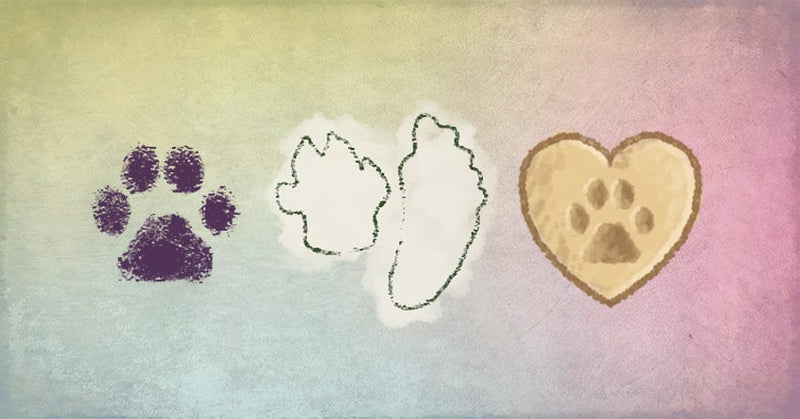
Capture your pet's unique paw print to create a meaningful keepsake with one of these three super simple DIY projects. Pet-Safe Ink Print Create a work of art with your pet’s paw prints using a non-toxic dye. Mix one package of Kool-Aid with only just enough water to make a Kool-Aid paste. If it gets too watery, you won’t be able to adhere it evenly to your dog’s paw. Spread the paste across a solid surface, and dip your dog’s pad into the dye. Alternatively, if you have a patient dog, use a paint brush to coat his paw evenly with the dye mixture. Once his paw is coated, press it onto a canvas or sheet of paper—just be sure to avoid any glossy-textured papers or else the Kool-Aid paste will smear. Use this technique to create an abstract print with multiple overlapping paws, or do a single paw print and embellish with your pet’s picture or name. Allow it to dry completely before framing or hanging. Use a pet-safe grooming wipe to remove the Kool-Aid, though if your dog does lick a bit of it, it’s perfectly safe. Trace and Color For a fun, kid-friendly project, have your child trace her foot on a large sheet of paper. Then, lure your dog next to your kiddo’s footprint and help her trace your dog’s paw print on the same sheet. Let her decorate the side-by-side footprint and paw print with age-appropriate art supplies. Repeat this exercise annually to track your child’s growth alongside her furry best friend. Dough Paw Print In a large bowl, mix one cup of flour with one cup of salt. Add a half cup of water and knead until you have a large, smooth ball. On a piece of wax paper, press the dough into your desired shape—use cookie cutters to create a heart or a round circle, or use Christmas shapes if you’d like this to become an ornament. Set the shaped dough on the wax paper onto the floor, and gently but firmly press your dog’s paw into the dough. If you’d like to turn the print into an ornament or a wall hanging, use a straw to create a hole at the top of the dough. Then, bake the print at 200-degrees Fahrenheit for two to three hours. Overcooking can cause it to crack, so check regularly and remove from the oven as soon as it's dry. Optional variation: Add food coloring to the water prior to kneading to create a colorful ornament. SHOP NOW SHOP NOW SHOP NOW SHOP NOW SHOP NOW SHOP NOW SHOP NOW SHOP NOW
We have worked with a variety of experts in the pet space to inform our wide range of content.

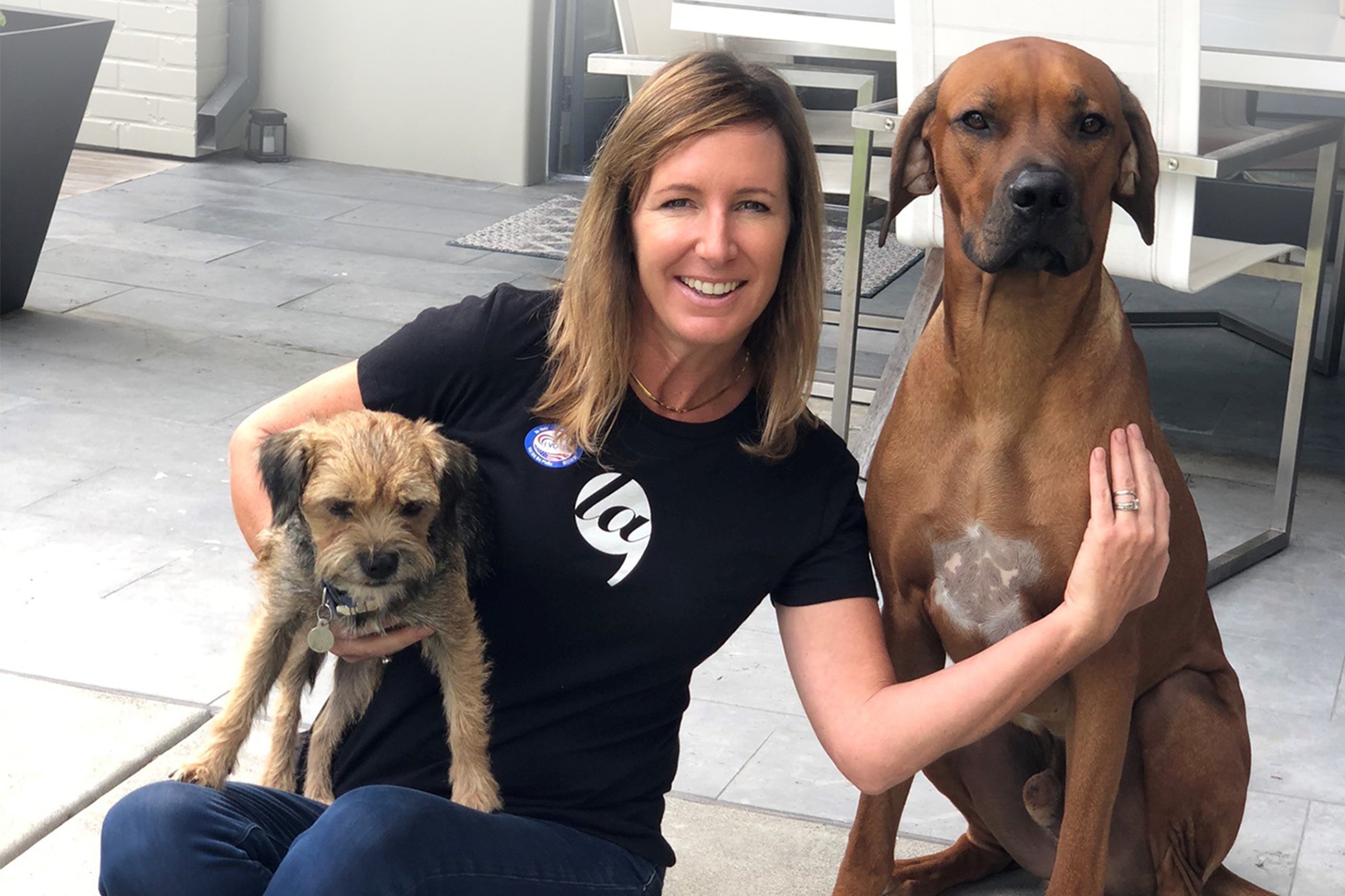
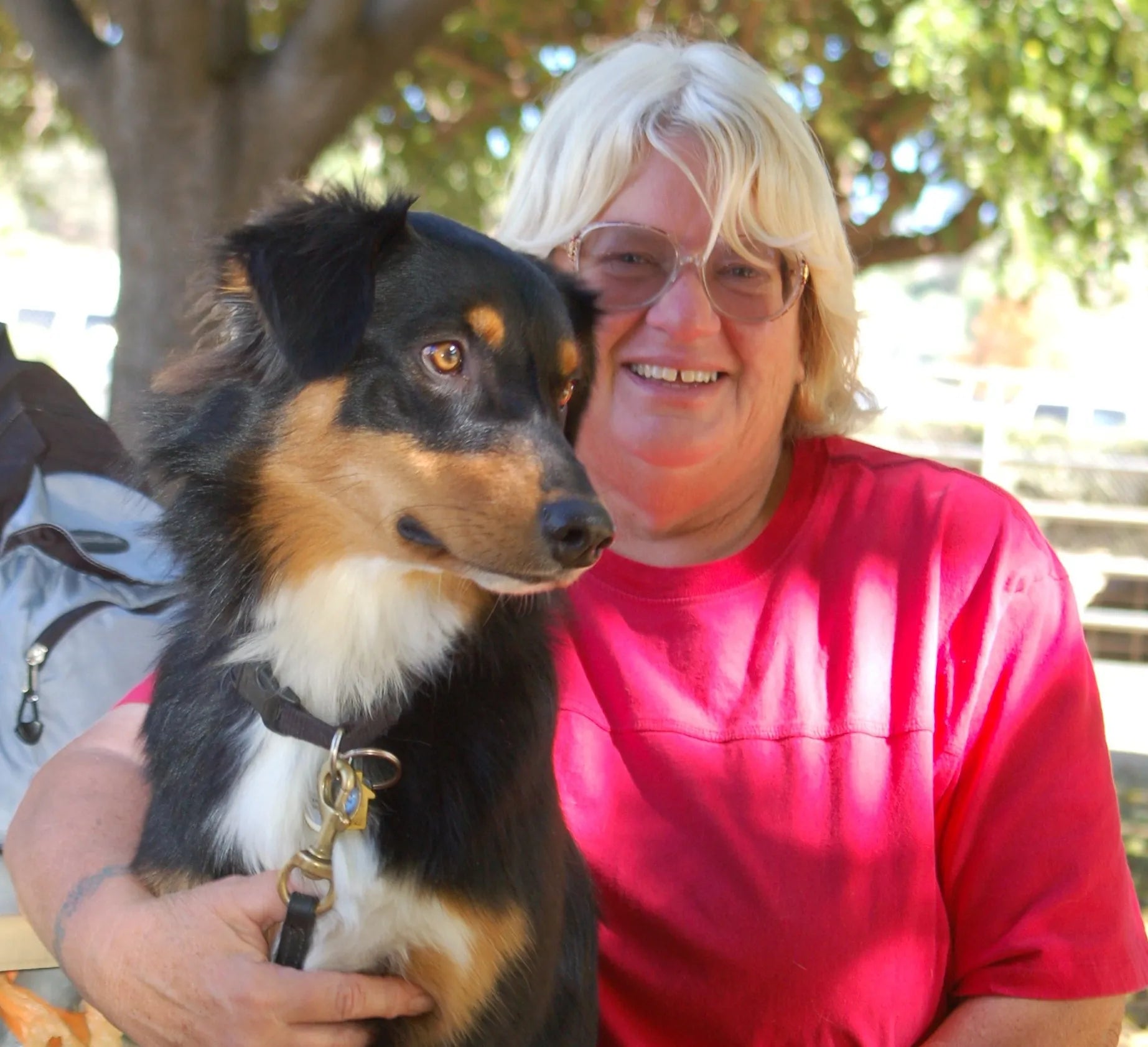

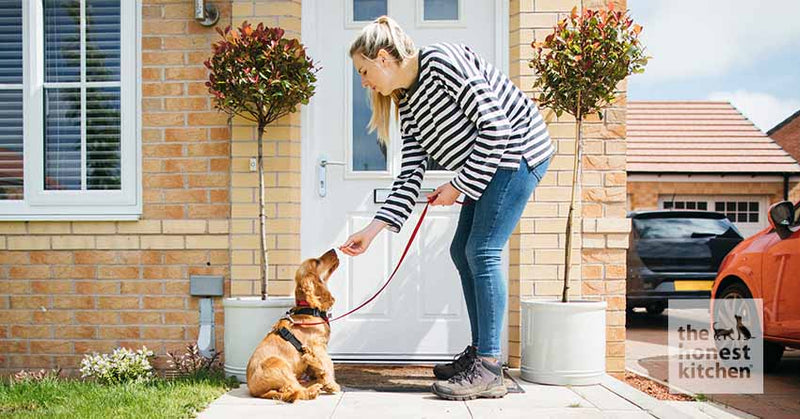
Find out when it’s safe to start giving your puppy treats, plus smart tips for healthy rewards that help with training and support your puppy’s development.
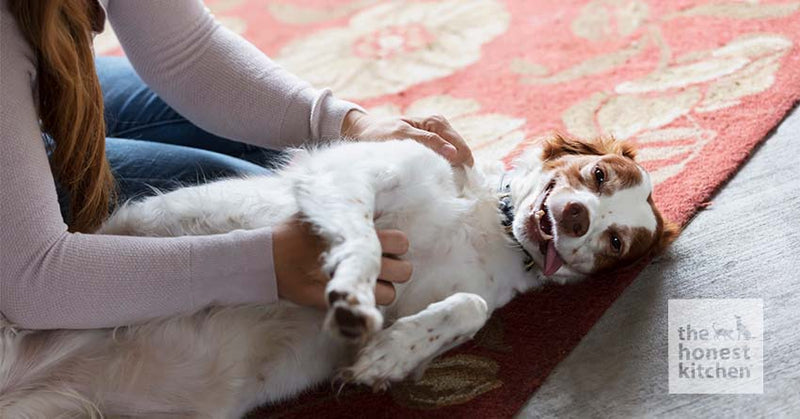
Learn how to identify the signs of food allergies in dogs, common triggers to avoid, and diagnosis and treatment options to help your dog stay healthy.
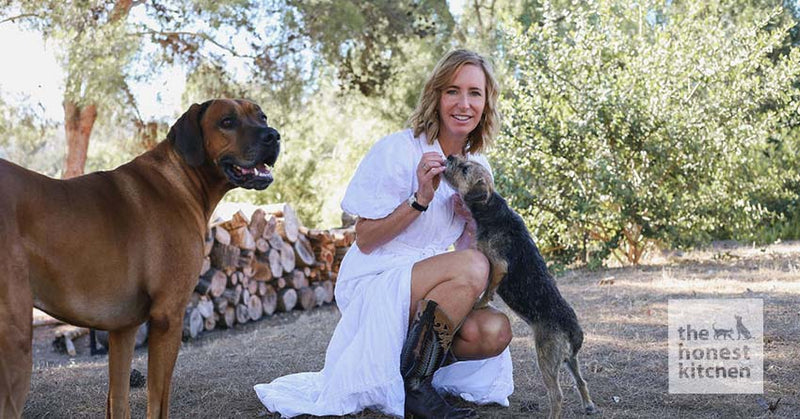
Learn how The Honest Kitchen changed pet food by becoming the first brand in the industry to earn the FDA’s approval to call our pet food “human grade.”
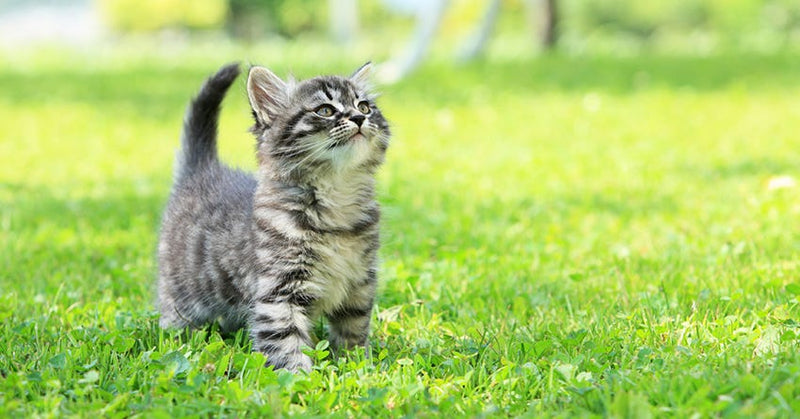
Learn what to feed your kitten for healthy growth and development. Get tips on safe, nutritious foods and feeding routines.